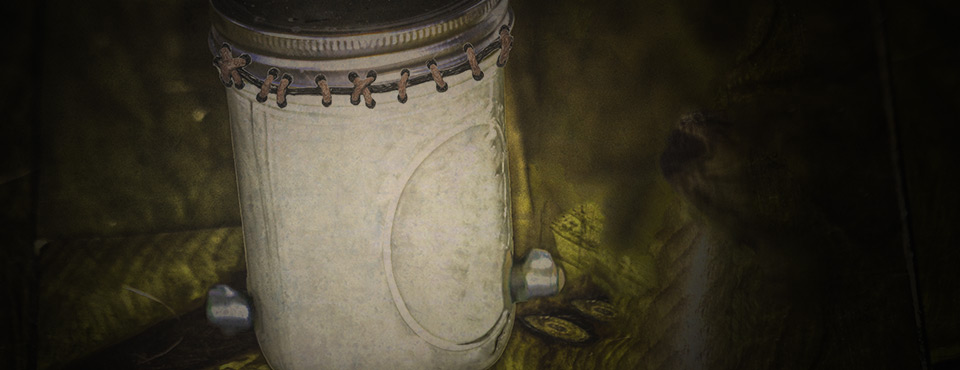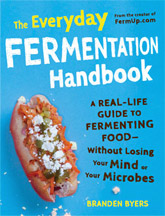What happens when two or more heirloom yogurt cultures collide? Will the bacteria balance out their cross-cultural differences and create a new and exciting yogurt? Or will the flavor and consistency turn to disaster after a few batches of this hybrid monster?
After fermenting food long enough to acquire numerous starter cultures, it is important to be aware of the potential for cross-contamination and bacterial drift. Store two different sourdough starters next to each other and they may eventually start tasting the same as the different yeasts begin to travel between vacation spots. But what happens when the contamination is purposeful? I’m sure it has been done before, but I have a few different heirloom yogurt varietals that I have mixed together in different combinations to see what kind of hybrid offspring they would produce.
Mad Scientist or Curious Cultivator?
With all of the talk and controversy surrounding genetically modified and hybridized foods, am I a careless mad scientist about to release a misunderstood Franken-Yogurt onto the innocent masses of microbes in my fermentation laboratory (a.k.a. kitchen)? Will I alter something in the environment and destroy the goodness in the individual yogurt starters that are so dear to me? Or am I simply experimenting and choosing my preferred hybrids as countless others have done throughout the generations of food cultivation?
Of course this is a dramatic way to look at the situation but it is interesting to contemplate how many seemingly insignificant choices animals (and microbes) have made throughout history to sculpt the landscape and diversity of the world we inhabit today. Specific to food, how many of our vegetables and fruits may have never existed if someone, or some group, hadn’t selected for special sizes, shapes, growing habits or tastes? What yogurts and cheeses may never have been tried if it weren’t for a decision somewhere along the line that declared a food or ferment important?
And in reverse, how many exotic flavors and textures have slipped away into extinction due to opposing selections and choices? How important is it that our future generations know the world of flavor that we now know? How much have we already lost? How much can we recreate and is it worth the effort? These are the questions that come to mind when I make a decision in the garden or kitchen.
Yogurt Diversity
It has only been in the last 100 years or so that such little diversity has existed amongst yogurt cultures. A scientist, by the name of Stamen Grigorov, discovered that a specific bacteria was responsible for the taste of yogurt. Lactobacillus bulgaricus, now referred to as Lactobacillus delbrueckii subspecies bulgaricus, has come to be known as the main fermenting agent in the taste and consistency of commercial yogurt.
Much of today’s yogurt is derived from a small selection of isolated bacteria that have been chosen for their reproducible behavior in commercial applications. Yet, what ramifications does this have in the greater scheme of yogurt’s history and future?
There is no record of when or where yogurt originated but it is thought to be at least 4,000 years old. The original “contamination” may have come from plant or animal stomach, but the specifics are only theories. Were those first yogurts the same as what we eat today? Were they chosen out of necessity or pleasure? Were they thick, thin, clumpy or smooth? What did they smell like? With the differences between heirloom yogurt varietals today, I can only imagine that the yogurts from long ago were not the same as the yogurts we taste today.
The diversity of yogurt may be dwindling. There are still families and cultures that pass dairy cultures down from one generation to the next. But on the global scale, commercial yogurt is king. If for no other reason, heirloom yogurts are important to keep alive so that it is not our negligence or desire for commercial efficiency that robs future humans of the choice to eat re-culturable yogurts handed down from our ancestors.
Given that there is an importance to keeping the diversity of heirloom yogurts alive, let us add to this cultural diversity by mixing up new ones if the bacteria will allow it.
How to Make Your Own Hybrid Yogurt Monsters
The process is simple. No lab equipment, special serums or lightening required.
Simply take two or more yogurt cultures and mix them together in fresh milk. For my experiment, I used 8 ounce mason jars with 1 tablespoon (15 grams) of total yogurt starter per jar. I fermented each of these on the countertop at room temperature for 12 hours. Below I have listed my initial hybrid crosses.
"Fil-mats"
- 1/2 tablespoon Matsoni Yogurt
- 1/2 tablespoon Filmjölk Yogurt
- 7.5 ounces organic whole milk
"Filmats" result: These two yogurts taste similar enough that they did not create anything new. I would say that the Filmjölk dominated this blend. The texture was similar to Filmjölk.
"Fil-bulgari-mats"
- 1/3 tablespoon Matsoni Yogurt
- 1/3 tablespoon Filmjölk Yogurt
- 1/3 tablespoon Bulgarian Yogurt
- 7.5 ounces organic whole milk
"Filbulgarimats" result: Even though Bulgarian yogurt mainly consists of thermophilic bacteria, it still added a bit of depth to this blend. Still nothing too exciting.
"Mats-efir"
- 1/2 tablespoon Matsoni Yogurt
- 1/2 tablespoon Kefir
- 7.5 ounces organic whole milk
"Matsefir" result: I know I said these were going to be yogurt blends, but I couldn't help but see what would happen when adding prepared kefir (not kefir grains) to the mix. There was a definite kefir taste to this blend but given that it was such a small sample, the taste could have been coming from the 1/2 tablespoon of kefir and not the result of extra fermentation.
"Bu-Fi-Ma-Ke"
- 1/4 tablespoon Matsoni Yogurt
- 1/4 tablespoon Filmölk Yogurt
- 1/4 tablespoon Bulgarian Yogurt
- 1/4 tablespoon Kefir
- 7.5 ounces organic whole milk
"Bufimake" result: There was again a strong kefir taste to this hybrid but the Bulgarian was also pronounced. There was only a hint of the cheesiness from the Filmölk and the Matsoni seemed lost somewhere in this mix. This was the most interesting one out of the tests that I performed.
Your Results May Vary
Do you have different yogurt cultures to experiment with? As you can see from the examples above, even if you only have kefir and Bulgarian yogurt, you could give this a try. Start small to see if the hybrid concoction tastes good. If you find a combination you like, see how many times you can re-culture it before it no longer tastes like you want it to taste.
Will the hybrid yogurts survive long-term?
These hybrids are not necessarily stable cultures in the same way that the traditional heirloom yogurt varietals are stable. My favorite mix out of the four tests was the Bufimake. I am currently fermenting the 5th generation of this hybrid and the flavor profile continues to change. It is now a mellow yogurt with far less discernible flavor from any one of the original starters.
The most consistent trait of the Bufimake so far is the glassy surface after 12 hours of fermentation. It reminds me of the surface of milk in cheese making before breaking the curd. Bufimake is a semi-thick yogurt. I like the flavor and will continue to ferment it until it no longer resembles anything appetizing.
What's next?
As I continue to ferment generation after generation of my new found franken-yogurt, I can’t help but imagine what other combinations I could experiment with. Are yogurt cultures stable enough that a yogurt will always maintain some bit of a yogurt taste no matter what the mix? Or will some combinations prove weak and unforgiving? What happens if I add a little sauerkraut juice with a yogurt starter? What happens if I add some edible wild plants to the mix? Would any of these things add something that is not already present? Is it possible to create a yogurt that is amazing and different in flavor, texture and preparation requirements?
It is important to acknowledge the inherent risk involved in experimentation and to ferment wisely. If something doesn’t smell right, or tastes bad it is probably not worth eating. Some scary bugs can crop up in milk, so please be cautious when experimenting.
If you don’t feel comfortable performing dairy fermentation experiments, then there are still plenty of opportunities for expanding your fermented world. Vegetable ferments will produce different results if temperature, time, or salt ratio are adjusted. Using a starter such as whey or juice from a previous vegetable ferment will make for different flavors than vegetables fermented without a starter.
The world of food fermentation is full of possibilities. Traditional fermented foods have been handed down from generation to generation. But somewhere along the line, people had to experiment or at least run across happy accidents. What kind of happy accidents will come from your fermented food experiments? There is only one way to find out.
Now off to the lab for more franken-fermented fun!


 Listen Now
Listen Now 
